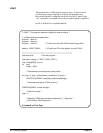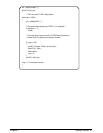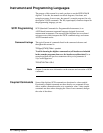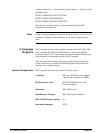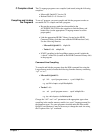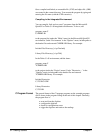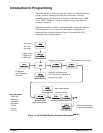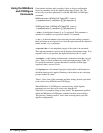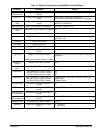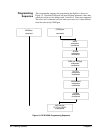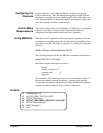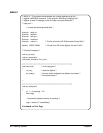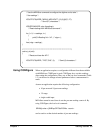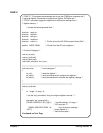
Using the MEASure
and CONFigure
Commands
Each time the digitizer takes a reading, it does so from a configuration
based on parameters set by the digitizer subsystems (Figure 1-4). The
easiest way to set these parameters is with the MEASure or CONFigure
command.
MEASure[<
chan
>]:ARRay[:VOLTage][:DC]? (<
size
>)
[,<
expected value
>[,<
resolution
>]] [,(@<
input port
>)]
CONFigure[<
chan
>]:ARRay[:VOLTage][:DC] (<
size
>)
[,<
expected value
>[,<
resolution
>]] [,(@<
input port
>)]
< chan > is the digitizer channel (1 or 2) configured. This parameter is
optional. If a channel is not specified, channel 1 is assumed.
(< size >) is the total number of pre-arm and post-arm readings (samples)
taken each time an arm signal occurs. Note the space between the command
header and the <size > parameter.
<expected value > is the amplitude (range) of the signal to be measured.
This optional parameter is used to set the digitizer measurement range. If an
expected value is not specified, the digitizer defaults to the 1V range.
<resolution > is the reading resolution and is determined from the expected
value. There is a fixed resolution for each measurement range (Table 3-2).
If a specified resolution is greater that what is available for that range
(expected value), an error occurs.
(@<input port>) is the channel input port (single ended or differential) to
which the input signal is applied. Readings can be taken on only one input
port per channel at a time.
Table 1-3 lists some of the commands and their settings that are equivalent
to the values set by MEASure and CONFigure.
When MEASure? or CONFigure is executed, many of the digitizer
parameters are set to their reset values (see Appendix B,
Table B-2 for a complete listing of reset values). The parameters specified
within the MEASure or CONFigure command are then set accordingly.
This prevents "Settings conflict" errors from occurring due to previous
digitizer configurations.
34 Gettin
g
Started Chapter 1



